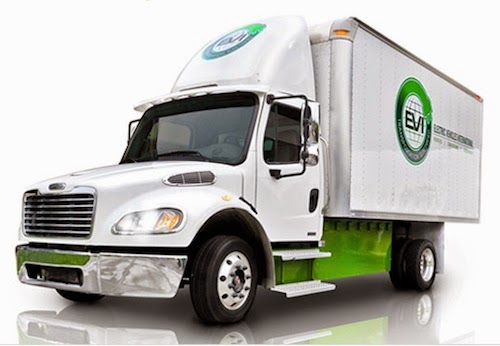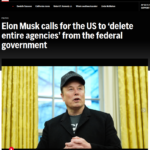It’s well known that burning diesel fuel emits many harmful byproducts with global warming and negative health effects. CARB studies![]() show that diesel particulate matter contributes to premature death, lung cancer, decreased lung function in children, chronic bronchitis, respiratory and cardiovascular problems, asthma, respiratory symptoms, and is a potent global warming agent. Diesel vehicles are in wide use, and in the U.S. they are primarily used in large vehicles, busses, trucks, ships, and trains.
show that diesel particulate matter contributes to premature death, lung cancer, decreased lung function in children, chronic bronchitis, respiratory and cardiovascular problems, asthma, respiratory symptoms, and is a potent global warming agent. Diesel vehicles are in wide use, and in the U.S. they are primarily used in large vehicles, busses, trucks, ships, and trains.
Ports have a high concentration of diesel burning vehicles and high rates of disease in the vicinity. The Port of Los Angeles has developed a Clean Air Action Plan![]() and has proposed a Clean Trucks Program
and has proposed a Clean Trucks Program![]() . The concept is to use fees to encourage phase-out of “old” trucks in favor of new presumably cleaner trucks. Their list of approved truck options includes those with “clean diesel” and LNG engines. According to their white paper on LNG trucks
. The concept is to use fees to encourage phase-out of “old” trucks in favor of new presumably cleaner trucks. Their list of approved truck options includes those with “clean diesel” and LNG engines. According to their white paper on LNG trucks![]() , compared to “the average 1995 model year drayage truck” a clean diesel truck achieves an 82% reduction in nitrogen oxides emissions while an LNG truck achieves an 86% reduction. LNG trucks have a higher cost than diesel, and as a result they are targeting a mix of diesel and LNG trucks.
, compared to “the average 1995 model year drayage truck” a clean diesel truck achieves an 82% reduction in nitrogen oxides emissions while an LNG truck achieves an 86% reduction. LNG trucks have a higher cost than diesel, and as a result they are targeting a mix of diesel and LNG trucks.
Every port is going to have the same pollution issue from a concentration of ships and trucks. The status of efforts in a few ports are:
- The Port of Oakland
 has a program similar to the one in Los Angeles.
has a program similar to the one in Los Angeles. - The Port of Tacoma
 does not have a truck replacement program. They are encouraging the use of low sulfur fuels, and interestingly are using an on-dock rail system to minimize the concentration of trucks in the port.
does not have a truck replacement program. They are encouraging the use of low sulfur fuels, and interestingly are using an on-dock rail system to minimize the concentration of trucks in the port. - The Port of Virginia
 simply has a statement of certification with applicable environmental laws and regulations.
simply has a statement of certification with applicable environmental laws and regulations. - The Port Authority of New York and New Jersey apparently does not have an environmental plan.
- In the Boston area, Massport
 has an environmental plan that is apparently focused primarily on Logan Airport.
has an environmental plan that is apparently focused primarily on Logan Airport.
Clean diesel primarily refers to ultra-low sulfur diesel (ULSD). The particulate matter comes from sulfur in the fuel, and removing the sulfur in the refining process keeps it from being burned and becoming particulate matter in the air. It’s expected that by December 1, 2010 all diesel for highway use will be ULSD. Various diesel particulate filters are also added to trucks to mitigate emissions.
Biodiesel is also a clean diesel has a low sulfur content resulting in particulate production around 50 percent less than fossil-sourced diesel. Considering the total effect of biodiesel use has to consider the whole production process including emissions from growing, transporting and processing feedstock, emissions from change in land use, efficiency compared to fossil-sourced diesel, tailpipe emissions compared to fossil-sourced diesel, etc. These issues are still a matter of research.
LNG is natural gas that has been liquified. The process involves removing some components from natural gas, then compressing and freezing it to super cold temperatures. The process requires a lot of energy which adds expense and emissions to the use of LNG. Often the natural gas used to make LNG would otherwise be flared. While the environmental performance of LNG is worse than straight natural gas, it is better than fuel oil or coal.
Electric trucks are also in development. Due to limited range electric trucks are being targeted for use in limited range situations such as within ports, or around town deliveries. The Balqon Corporation![]() makes a range of trucks and are explicitly targeting use at ports facilities. One of their trucks is capable of hauling 30 ton cargo loads. Electrorides
makes a range of trucks and are explicitly targeting use at ports facilities. One of their trucks is capable of hauling 30 ton cargo loads. Electrorides![]() makes a truck based on the Izusu NPR, it can travel on most roads, haul 5 tons, and travel up to 65 miles. Smith Electric Vehicles
makes a truck based on the Izusu NPR, it can travel on most roads, haul 5 tons, and travel up to 65 miles. Smith Electric Vehicles![]() is an English company with a long history of making electric trucks. They recently announced a US assembly plant in Kansas City, Missouri, with production due to begin in third quarter of 2009.
is an English company with a long history of making electric trucks. They recently announced a US assembly plant in Kansas City, Missouri, with production due to begin in third quarter of 2009.
- Clean Trucks Documents

- Heavy Duty Electric Truck

- California Clean-Trucks Program Ahead of Plan

- Smith Electric Vehicles US Selects Kansas City for Electric Truck Assembly Plant; Newton Model to Be First

- EV News, Feb 6, 2009

- 2008 Electrorides Zero Truck Test Drive: All-Electric Heavy Hauler’s 100-mile Range Costs $3 to Recharge

- The USA should delete Musk from power, Instead of deleting whole agencies as he demands - February 14, 2025
- Elon Musk, fiduciary duties, his six companies PLUS his political activities - February 10, 2025
- Is there enough Grid Capacity for Hydrogen Fuel Cell or Battery Electric cars? - April 23, 2023
- Is Tesla finagling to grab federal NEVI dollars for Supercharger network? - November 15, 2022
- Tesla announces the North American Charging Standard charging connector - November 11, 2022
- Lightning Motorcycles adopts Silicon battery, 5 minute charge time gives 135 miles range - November 9, 2022
- Tesla Autopilot under US Dept of Transportation scrutiny - June 13, 2022
- Spectacular CNG bus fire misrepresented as EV bus fire - April 21, 2022
- Moldova, Ukraine, Georgia, Russia, and the European Energy Crisis - December 21, 2021
- Li-Bridge leading the USA across lithium battery chasm - October 29, 2021












